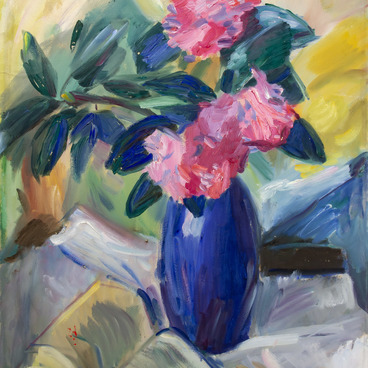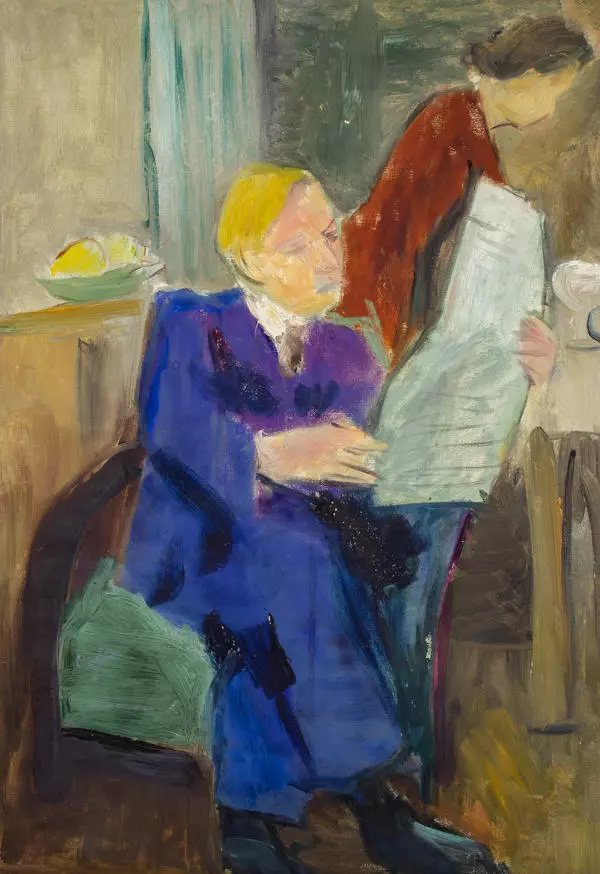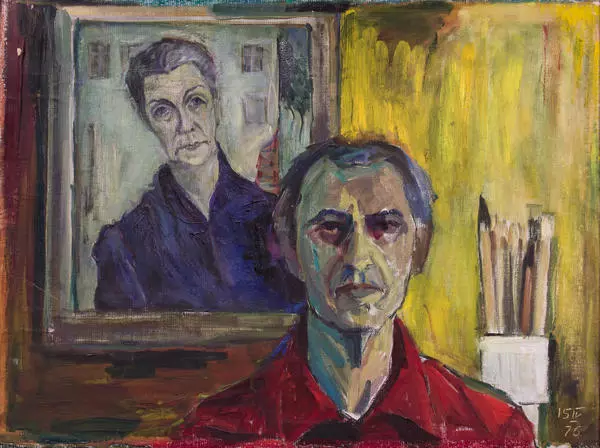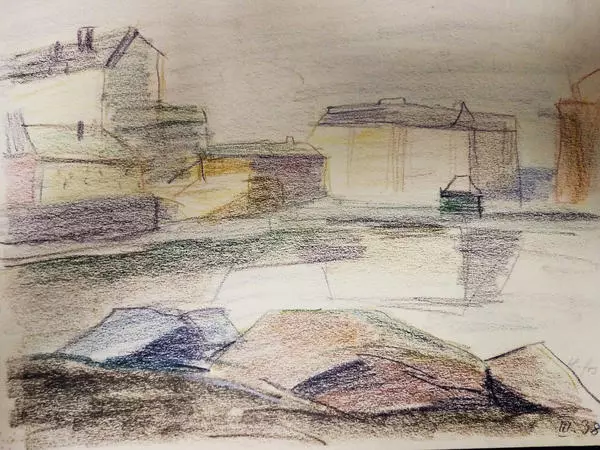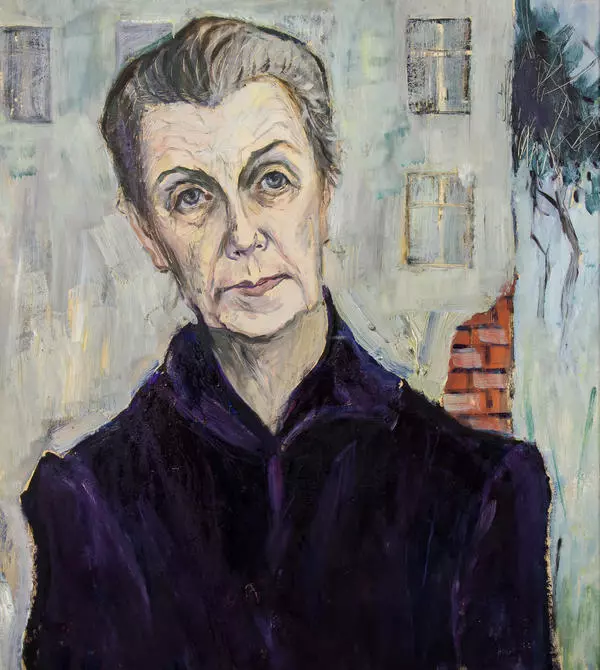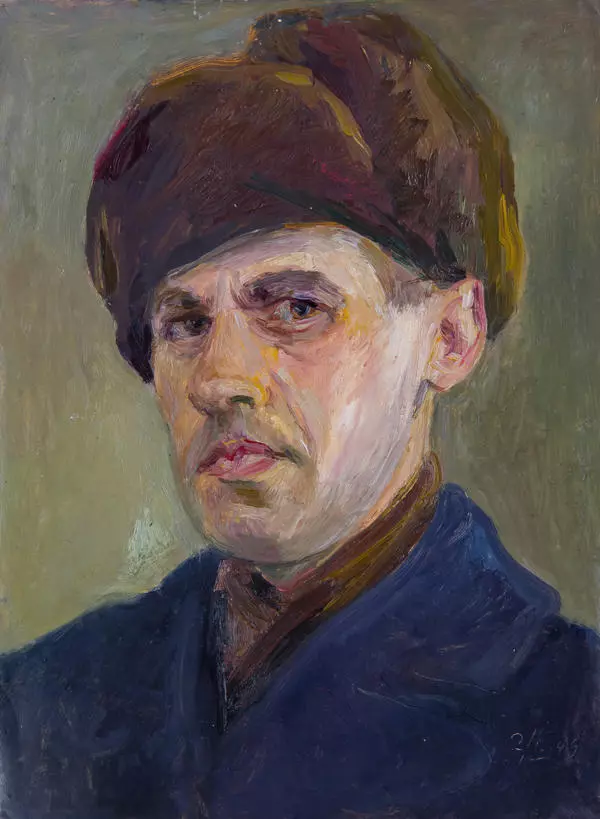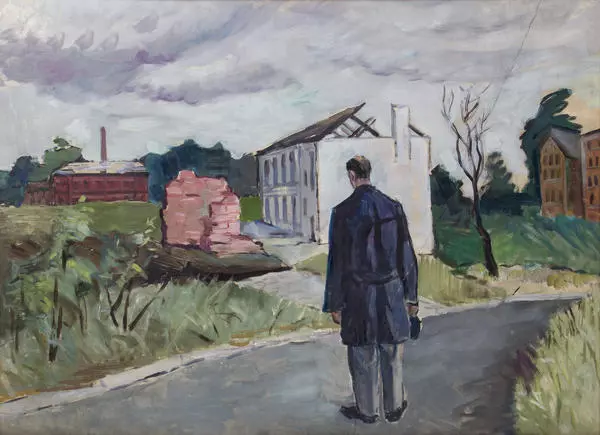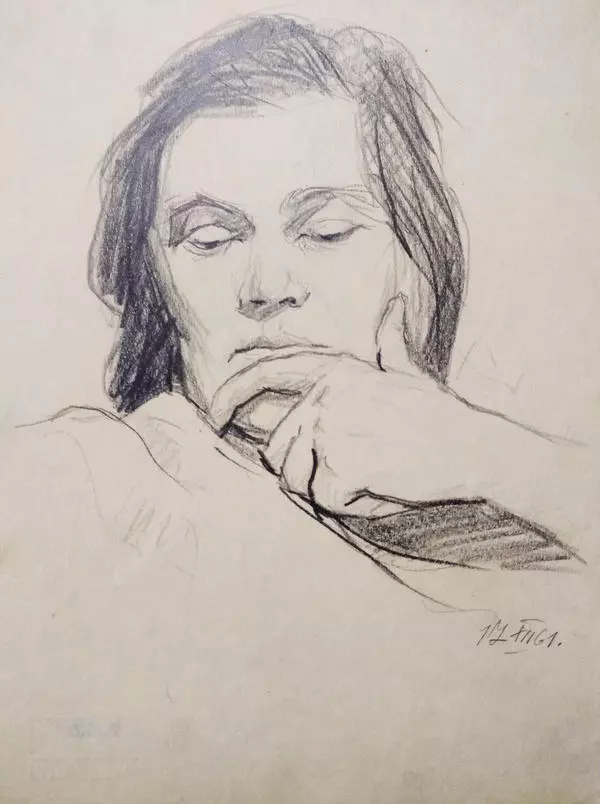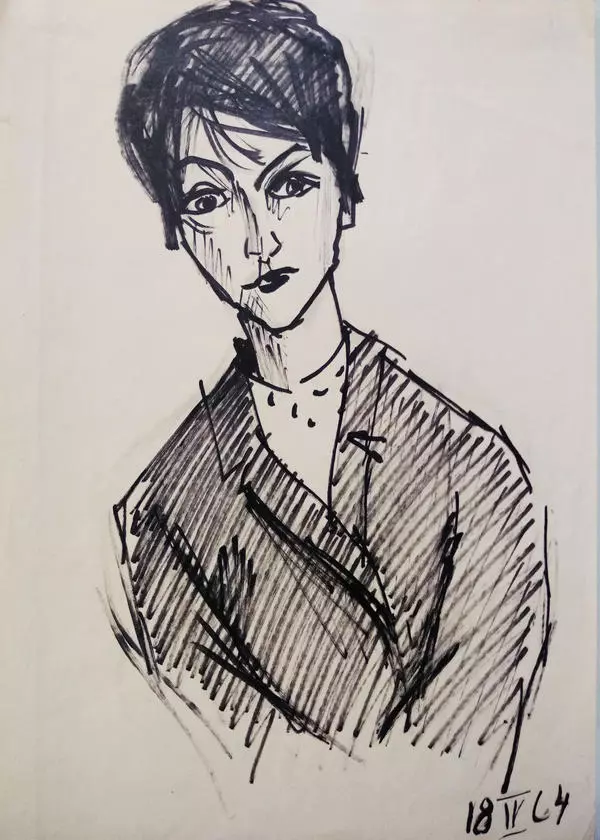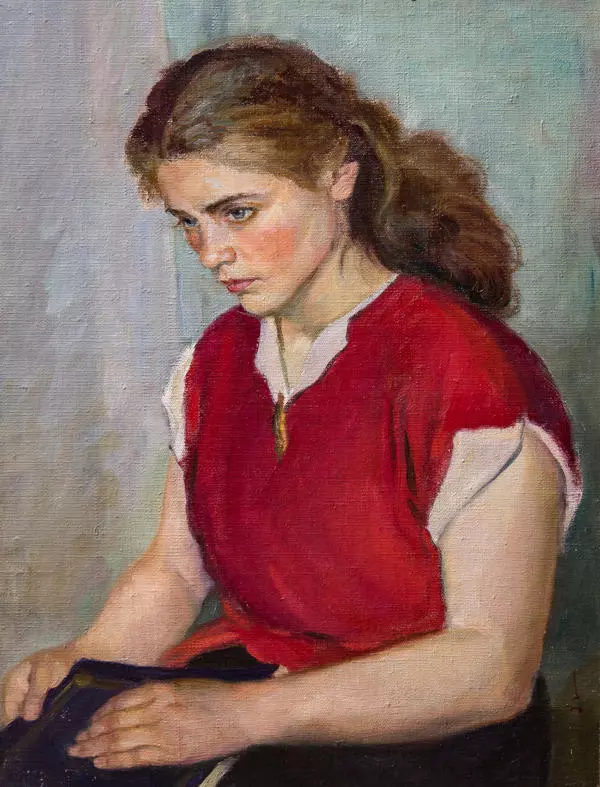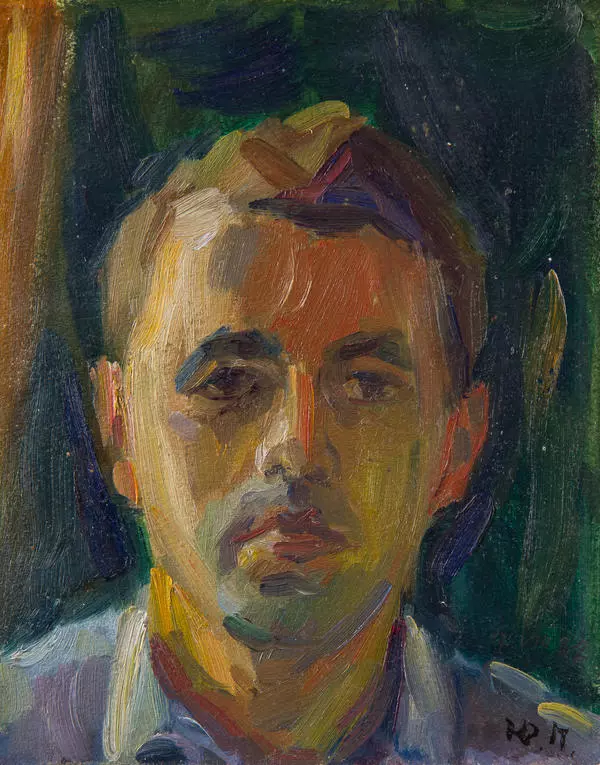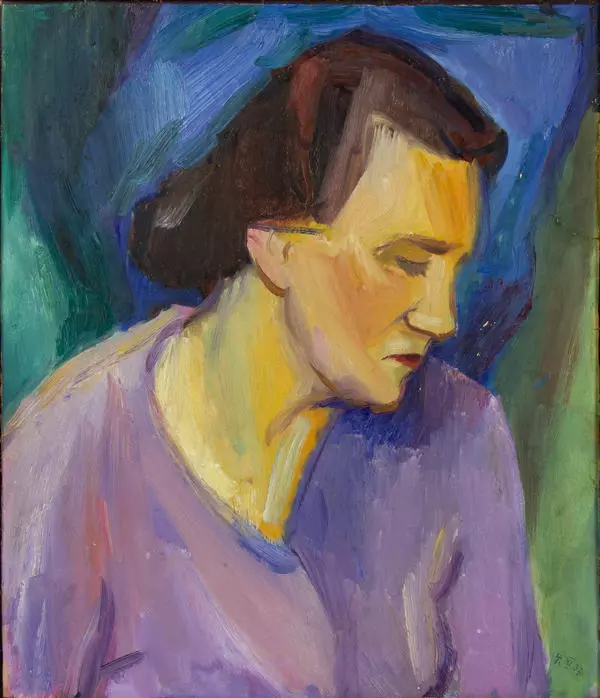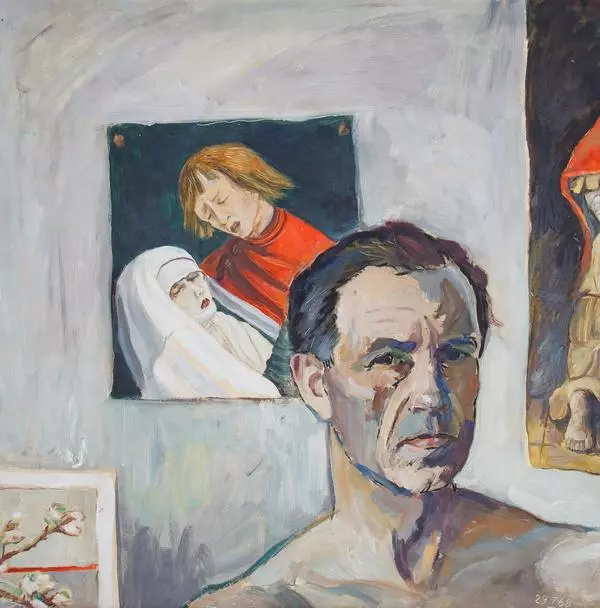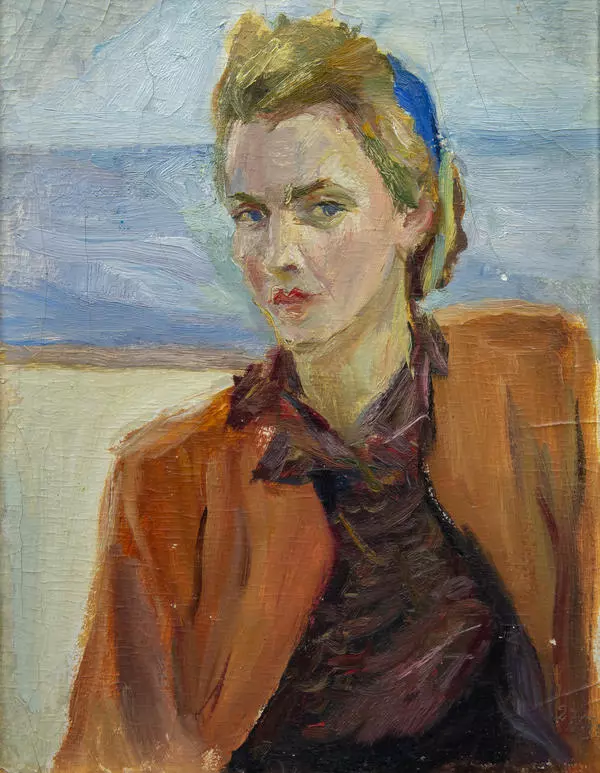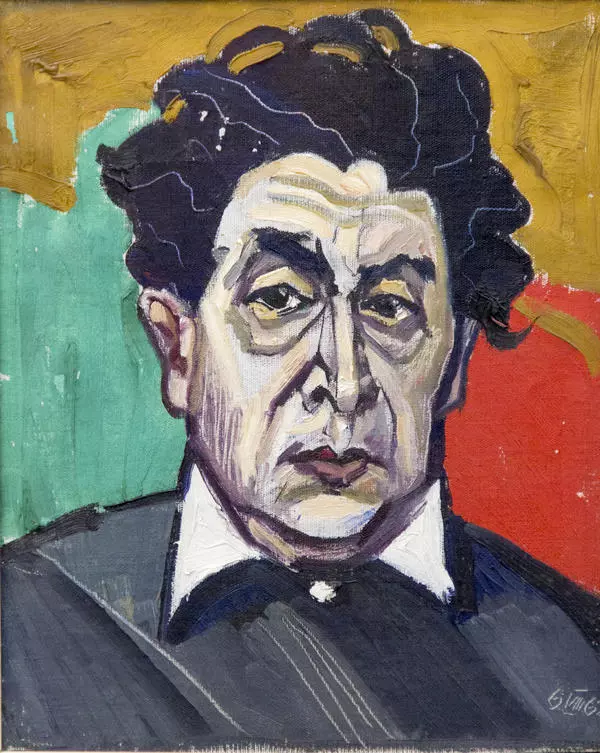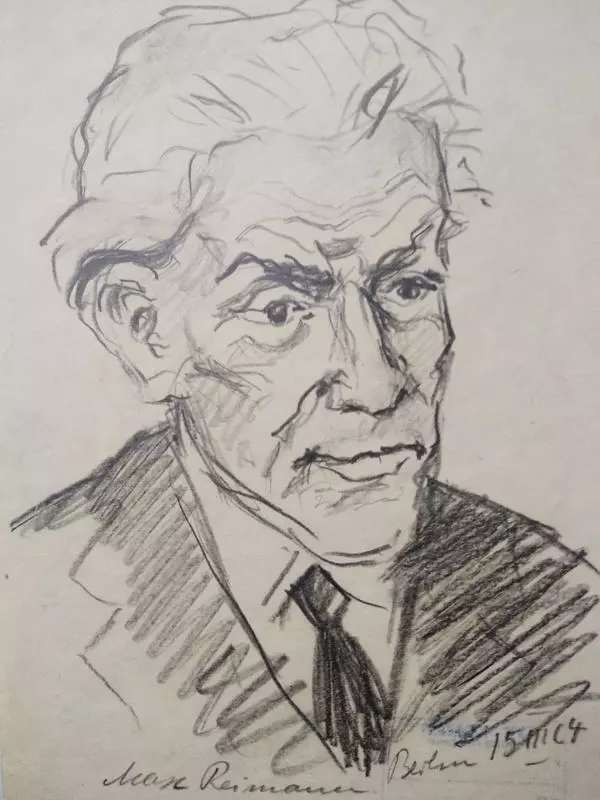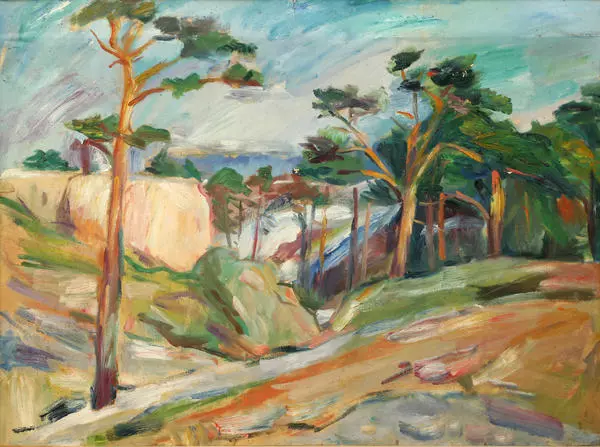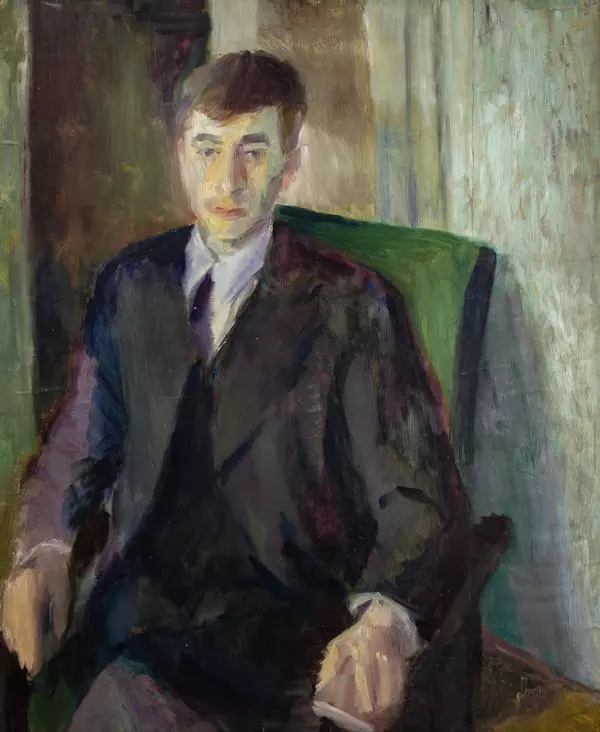In 1976 European and Soviet artist Jurgis Preiss handed over his Self-portrait with wife to the collection of the Kemerovo Regional Museum of Fine Arts. He created the painting in 1936 in Finland. At that time the young artist’s name was Hans Richard. He was a Soviet intelligence agent, traveled a lot in Europe with Gertrude Gennis, whom he had married in 1927, and painted.
Experts consider this self-portrait with Gertrude to be one of the best works of Jurgis Preiss. The painting belongs to the early, European, period of work of the master. It lasted from the 1930s to 1940, when the couple returned to the Soviet Union and was soon forced to move from the capital to Saratov. During those years most of Preiss' paintings and graphic works were portraits of Gertrude Gennis, or Genia, as he called her. Preiss also often painted self-portraits with her.
Self-portrait with wife was painted in February 1936. It captures a rare moment of common life of Gertrude and Hans-Jurgis, as at that time they frequently had to live separately — the illegal political activity of the couple had its consequences. The picture depicts young people in love with each other. Their faces are turned to the viewer. Gertrude is in the foreground — most of light in the picture is focused on her. Preiss' wife is depicted breast-deep, wearing a grey coat with a fur trim and a small dark hat. The collar of the dress is fastened with a small white brooch. The artist depicted himself in the background, half-turned. His chest and neck are shaded and practically merge with the bluish-ochre background. The painting is made in the expressionist manner — it is characterized by energetic broad brush strokes, a thick layer of paint and a combination of bright colors. Preiss’ color solution in this work consists of ochre, green and blue tones, scattered by soft daylight.
Preiss painted the self-portrait from life and in one session. This technique is called a la prima, which translates from Italian as in one sitting. The artist has got his work completed before the oil paint completely dries on the canvas.

